Medieval Dynasty 8 Best Tips for Beginners
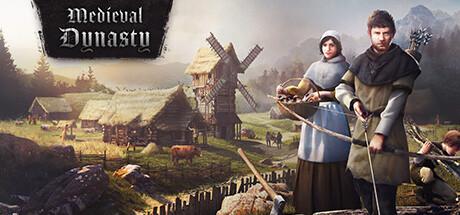

Release Date17 September 2020DeveloperRender CubePlatformPlayStation 5, Xbox One, PlayStation 4, Xbox Series X and Series S, Xbox Cloud Gaming, Microsoft WindowsPC Gamer74%Steam Rating9/10
Game Details
Introduction
Medieval Dynasty is not just another survival game. With its in-depth mechanics and beautifully rendered landscapes, it allows players to immerse themselves in the challenging, yet rewarding, life of a medieval settler. But like every good game, its richness can be daunting for first-timers. Let’s break it down.
Picking the Right Starting Location
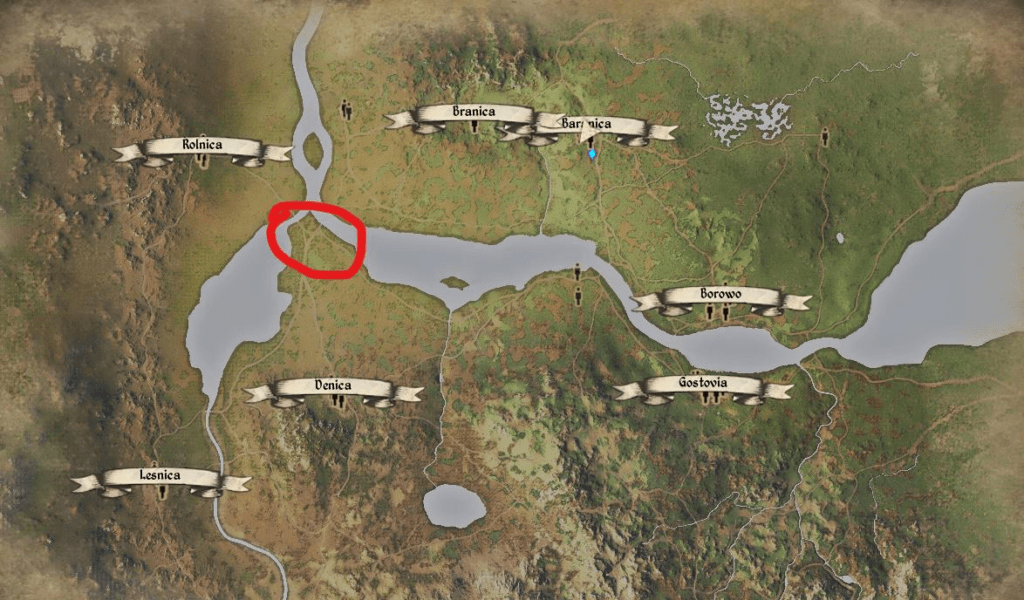
Behind every legendary empire lies the humble origin of a strategically chosen starting location. As a fledgling leader in the vast world of Medieval Dynasty, the canvas of your dynasty’s story begins with that one pivotal decision: where to establish your first settlement. This choice isn’t just about planting a flag on a piece of land; it’s about foresight, sustainability, and strategic planning.
Resources
The landscape of Medieval Dynasty is teeming with a myriad of resources, each vital for different facets of survival and growth. Nestling your village near lush forests ensures a steady supply of wood – a fundamental building block for structures, tools, and fires. Proximity to the serene ripples of a river not only guarantees clean water for drinking and irrigation but also offers fishing opportunities, adding another layer to your food resources. Expansive open fields, meanwhile, are the cradle of agriculture; they promise bountiful harvests that can sustain a growing population and possibly trade surpluses in the future.
Villagers
Your journey isn’t a solitary one. The surrounding settlements are populated with villagers, each with their own expertise, stories, and goods. Building close to them fosters a sense of community and opens doors to invaluable trades, collaborative tasks, shared wisdom, and even potential allies for times of conflict or mutual endeavors.
Threats
But not every corner of this medieval realm is welcoming. Nature, while majestic, houses its dangers. Establishing too close to habitats of ferocious wildlife risks regular confrontations with beasts, jeopardizing your settlers’ safety. Equally perilous are zones notorious for banditry. These roving marauders, always on the lookout for vulnerable settlements, can wreak havoc if you’re unprepared.
Selecting the right starting location is a balance of opportunity and caution, which is very important in the growth of your empire.
Resource Management and Prioritization in Medieval Dynasty
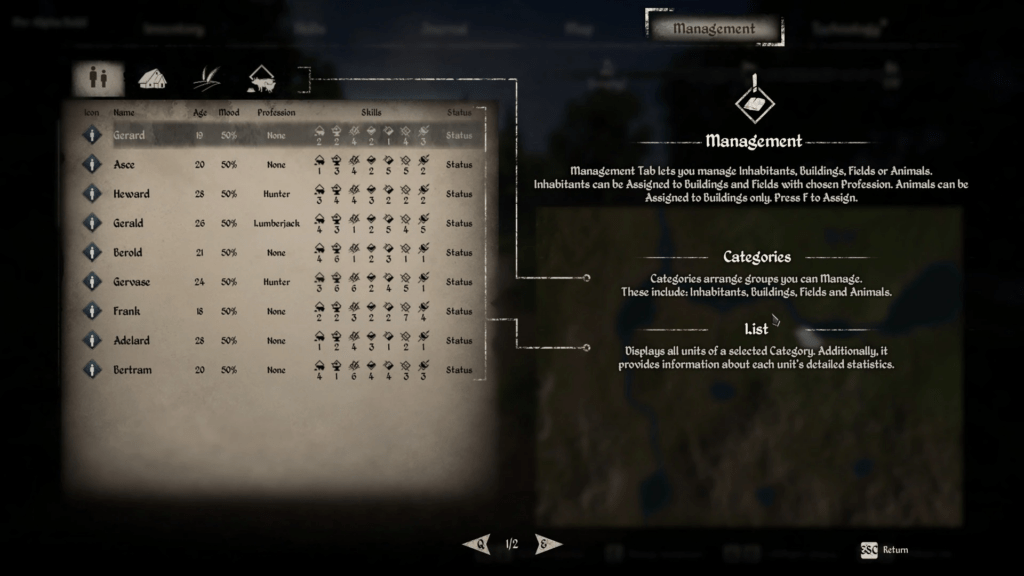
Navigating Medieval Dynasty, it feels like every pebble and every blade of grass counts. The game is teeming with resources, some as simple as the twigs beneath your feet, others hidden like buried treasure. For someone dipping their toes into this expansive world, the sheer amount to collect and prioritize can be dizzying.
Stay Prepared
In a game where seasons change and unexpected hurdles crop up, always be ready. Ever had that moment when an unforeseen winter storm hits and you wish you’d stocked up on more firewood? Or when you find your food supplies dwindling faster than expected? Yup, preparation is king. Keep a healthy stash of essential items, especially non-perishables and fuels, to ensure your villagers stay cozy and fed, come what may.
Begin at Square One
We’ve all been there – starting a new game, eyes wide, dreaming of grand castles and epic battles. But in Medieval Dynasty, success is built on the basics. So, focus on gathering those everyday resources first. Collect those stones, pick those plants, and don’t underestimate the humble reed. As you secure the basics, you’ll find the path to those grander ambitions becomes clearer.
In a nutshell, playing Medieval Dynasty isn’t just a race to be the richest lord or lady. It’s about getting to know the rhythm of the land, planning for the days ahead, and guiding your kingdom to thrive through thick and thin.
Building and Upgrading Your Settlement
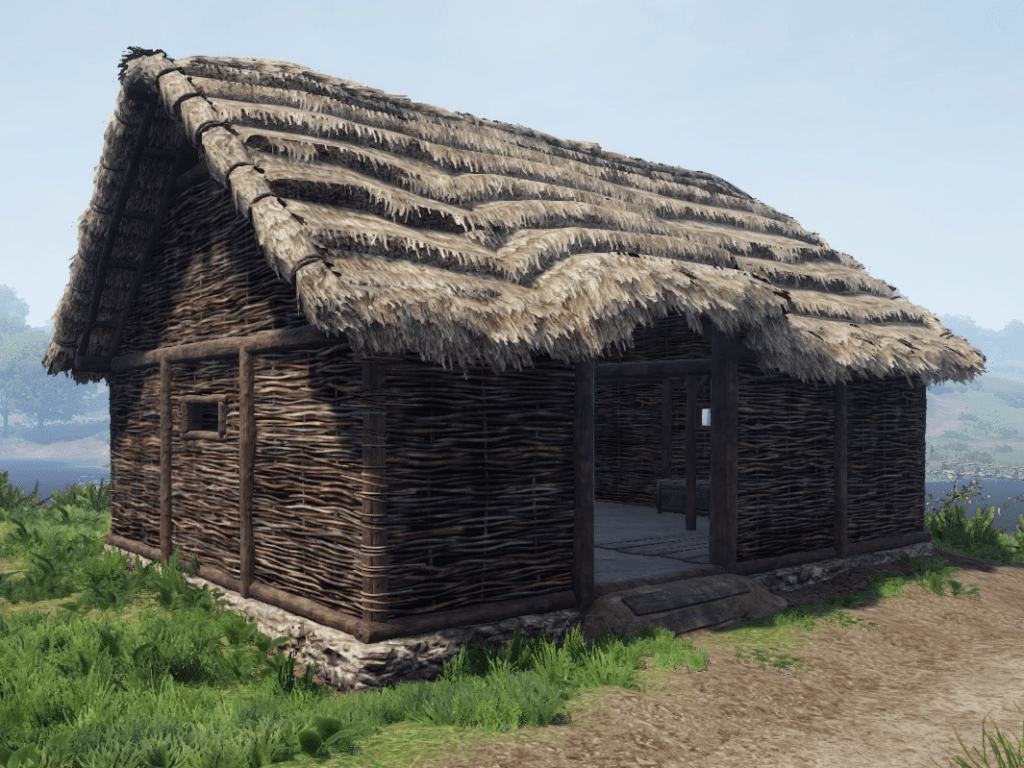
In Medieval Dynasty, there’s nothing quite like the thrill of watching a humble shack evolve into a bustling community. Every iconic city or village you’ve heard of, both in real life and in-game, started with a single idea: let’s build a home.
Your Humble Abode in Medieval Dynasty
When you first dive into construction, aim for a basic yet reliable house. It may seem unassuming, but this little haven packs a punch. It’s your shield against Mother Nature’s whims and any curious critters lurking nearby. It’s also your storage locker, protecting your hard-earned loot from rain, rust, and rot. Plus, let’s not forget, it’s your maiden workshop, where all those piles of raw stuff you’ve been collecting get a purpose, turning into useful gear and gadgets.
Sprucing Things Up
As days turn into seasons, and your lone house starts getting neighbors, it’s clear – it’s time for a home makeover. Upgrades are more than just slapping on a fresh coat of paint or adding an extra window. They fortify your walls against unwanted guests (human or otherwise) and storms. And with every little improvement, you unveil nifty features and functions to cater to the needs of your growing band of villagers.
Planning Your Patch
It’s not just about putting buildings up willy-nilly. Thoughtful town planning makes all the difference. Map out those roads to avoid morning traffic jams. Think about where your villagers will live and work – no one wants a marathon trek to their job every day. And don’t forget those cozy communal spots: market squares, parks, and meeting places, ensuring your folks have places to chat, trade, and chill.
In the Medieval Dynasty universe, a thriving village is more than just bricks and mortar. It’s a testament to a player’s grit, foresight, and knack for leadership, telling the tale of a medieval dream brought to life.
Mastering the Skills Tree
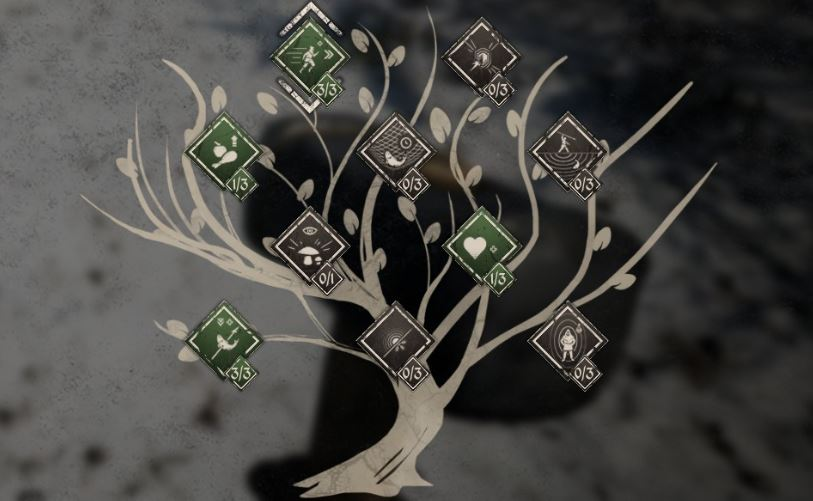
Venturing into “Medieval Dynasty” conjures an authentic sojourn through bygone epochs – not merely due to its antiquated ambiance. This experience mandates delineating one’s trajectory, discerning the precise station one wishes to occupy in this elapsed age.
The Rudiments
“Medieval Dynasty” transcends the mere act of daily perseverance. It beckons for strategic contemplation, judicious selection of vocations, and the acquisition of multifaceted proficiencies. Delving further, one is greeted with a labyrinthine schema of abilities, offering a spectrum – ranging from artisanal handiwork to the intricate dance of feudal diplomacy.
Initiation Phase
Every player embarks on their journey addressing quintessential necessities. In nascent stages, pursuits include procuring sustenance or gathering eclectic artifacts. The essence, then, is laying a robust edifice for existence. However, as your diminutive realm burgeons into a sprawling dominion, the narrative metamorphoses. Survival ceases to be the solitary quest – the narrative shifts towards opulence and dominion. The challenge then pivots to territorial stewardship, cultivating allegiances, perhaps even nurturing adversarial bonds, and adeptly sailing the turbulent seas of ancient statecraft.
Charting a Course
A salient feature of the game’s intricate skill matrix is its voluminosity. One might be beguiled into contemplating a Jack-of-all-trades approach, but a word of sagacity: the game exhibits a penchant for specialization. Should the romance of agronomy and the ballet of changing weathers resonate with your sensibilities, agriculture awaits your embrace. Conversely, if mercantile negotiations and tactful parleys intrigue, diplomacy beckons.
Retain the essence of names and subjects, and venture into the depths of linguistic profundity for a truly immersive journey through time.
Engaging with Villagers and Managing Relationships
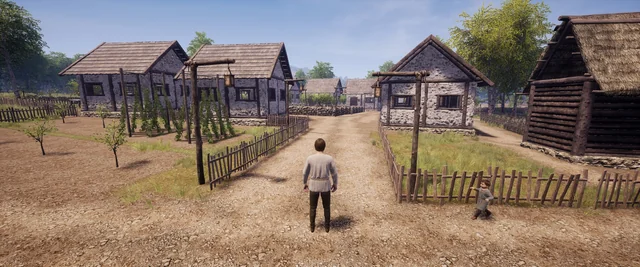
The rich tapestry of Medieval Dynasty isn’t woven by solitary rulers but by a collective of vibrant characters. At the heart of this collective are the villagers, whose interactions, loyalties, and skills play a pivotal role in the ebb and flow of the game.
Diplomacy
Every villager you encounter is a repository of stories, resources, and potential alliances. Engaging with them isn’t just about casual conversations; it’s about weaving a network of trust and interdependence. Whether it’s bartering goods, sharing news from distant lands, or seeking guidance on local customs, these interactions form the bedrock of your dynasty’s socio-economic landscape. Over time, these diplomatic overtures can blossom into robust relationships, making trade smoother and recruitment easier.
Recruitment
As the beams and bricks of your settlement start to form streets and squares, the need for skilled hands and sharp minds becomes pressing. This is where recruitment steps in. Every villager comes with a unique set of strengths – some might be adept at farming, while others excel in craftsmanship. Recognizing these strengths and assigning them roles accordingly ensures that your settlement runs like a well-oiled machine, with every individual contributing to its growth and prosperity.
Relationships and Marriages
Beyond the hustle and bustle of daily tasks and trading, Medieval Dynasty also dives deep into the personal facets of medieval life. Marriage isn’t just a token of companionship; it’s a strategic alliance. Tying the knot can cement political ties, bring in dowries, and most crucially, ensure the continuation of your lineage, providing heirs to carry forth your legacy.
In the grand realm of Medieval Dynasty, every interaction, every alliance, and every relationship is a brick in the monumental edifice of your empire. Managing these ties with tact and strategy is what sets apart a fleeting settlement from a lasting dynasty.
Understanding the Seasons and Preparing for Changes
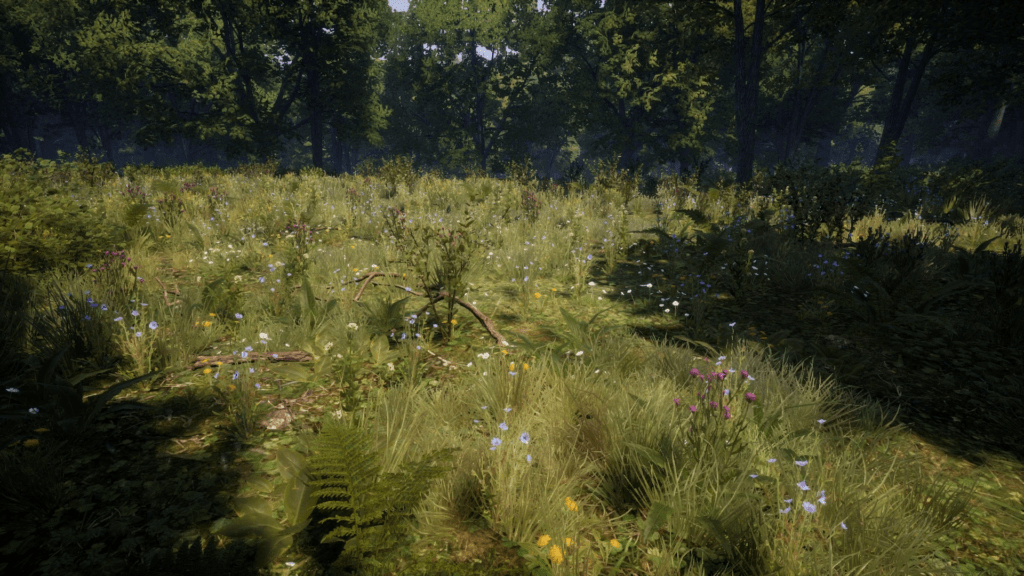
Medieval Dynasty, with its kaleidoscopic terrains, beckons not merely as a visual odyssey but as a crucible for the tactical mind. The undulating cadence of its seasons unfurls not just picturesque vistas but distinct epochs, each laden with its bespoke tribulations and boons, soliciting both nimbleness and prescience from its audience.
Anticipating the Frosty Embrace
Winter, draped in its icy veil and austere tapestries, emerges as perhaps the game’s most exacting epoch. Its onset signifies not merely a crucible of fortitude but one of readiness. The terra firma, swathed often in crystalline blankets, proffers scant sustenance. It is thus incumbent upon players to amass a veritable trove of edibles – salted game, sun-dried harvests, and hoarded cereals – as a bulwark against the leaner times. Yet, nourishment is but a single dimension. The piercing chills beckon for sartorial shields woven from the choicest fibres, a bulwark against winter’s bite. Of tantamount import is the continual provision of lumber, for the flames they birth not only banish cold but also kindle spirits during those protracted, obsidian nights.
Seasonal Sagacity
The game’s inherent pendulum motion ensures every season dances to its singular beat. Spring, kissed by rejuvenative droplets, beckons for the planting of life’s seeds, foreshadowing a prolific summer yield. As autumn swathes the world in its amber embrace, the wild becomes a hunting symphony, its creatures stirring in frenetic preparation for the looming cold. Winter, albeit stringent in its bounty, offers sanctuary from external toils, morphing into a haven for craftsmanship, restoration, and tactical ruminations. Within Medieval Dynasty, seasons transcend mere scenic transitions; they are kinetic enigmas, each presenting a tableau of ordeals and windfalls.
The Hunt and Harvest
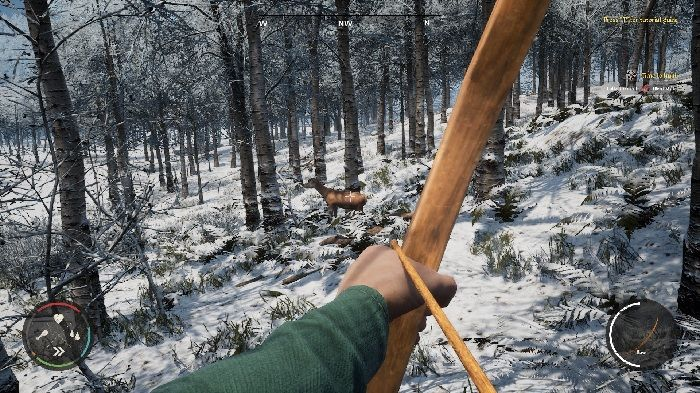
Surviving in Medieval Dynasty boils down to three key activities: hunting, farming, and crafting.
Hunting: Hunting is a game of both skill and strategy. Players must be careful not to over-hunt, or they’ll run out of animals to feed on in the future. Different animals require different techniques: for instance, hunting a deer requires stealth, while taking on a bear calls for strength and a good plan. Successful hunts provide valuable resources like fur and food.
Farming: Farming is all about patience and planning. Starting with basic crops like barley is a smart move because they’re reliable. But as players get better at farming, they can grow a wider variety of plants. It’s also essential to rotate crops so the soil stays healthy.
Crafting: Starting with basic tools like a stone knife is just the beginning in the world of crafting. As players progress, they can make everything from powerful weapons to warm clothes and useful medicines.
In short, hunting, farming, and crafting are all connected in Medieval Dynasty. Getting good at these activities is the key to turning a simple medieval life into a successful dynasty.
Advanced Strategies and Endgame
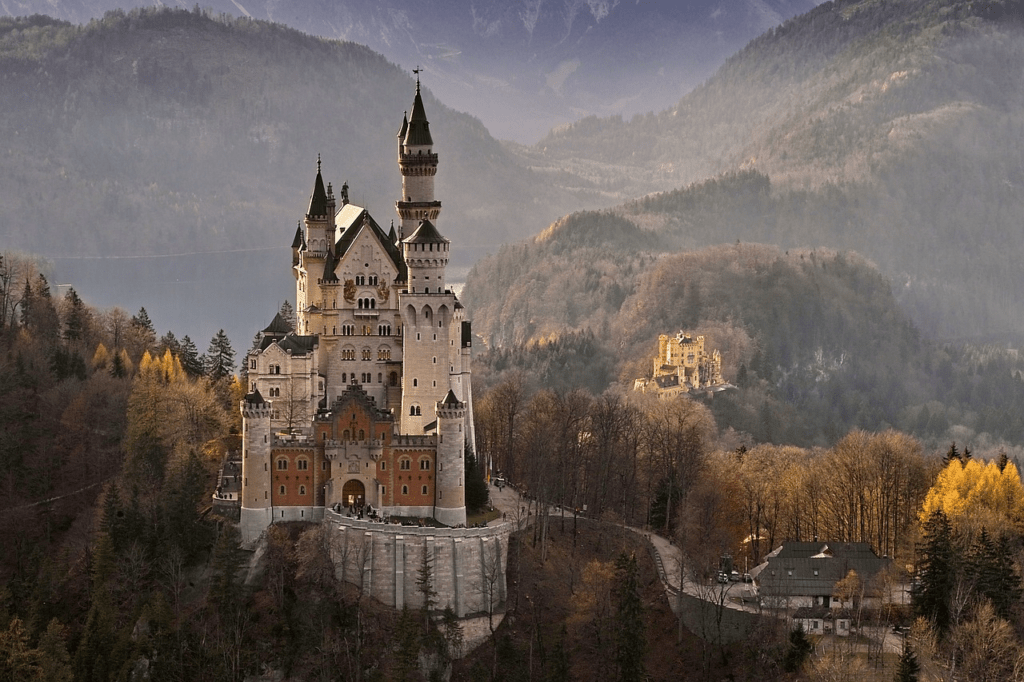
Navigating Challenges: Medieval Dynasty offers a mix of opportunities and dangers. For any player wanting to be a successful leader, it’s crucial to manage both.
Facing Real Threats: The game keeps things real. Unexpected cold snaps can ruin crops and harm your people. Diseases can sweep through your village, causing loss and draining resources. Players need to be prepared and strong to handle these challenges.
Wildlife and Enemies: It’s not just the animals you need to watch out for, but also human enemies. While the wilderness has its own set of predators, there are also bandits eager to raid your settlements. It’s essential to have good defenses, both walls and guards.
Planning Ahead: One of the keys to success in this game is thinking ahead. This could mean preparing for the next harvest, strengthening defenses against possible raids, or gathering needed supplies.
In Medieval Dynasty, the goal isn’t just to survive. Every challenge teaches players something new, helping them improve strategies and build a stronger community for the future.
Conclusion
Medieval Dynasty unfurls a tapestry rife with quandaries and quittances. Its intricacies might daunt, yet the euphoria of beholding one’s dominion flourish is unparalleled. Embrace the ascent, recalibrate, and bear in mind: each medieval saga is punctuated with tests. Yours is next.
Share This Article
Release Date17 September 2020DeveloperRender CubePlatformPlayStation 5, Xbox One, PlayStation 4, Xbox Series X and Series S, Xbox Cloud Gaming, Microsoft WindowsPC Gamer74%Steam Rating9/10
Game Details
Introduction
Medieval Dynasty is not just another survival game. With its in-depth mechanics and beautifully rendered landscapes, it allows players to immerse themselves in the challenging, yet rewarding, life of a medieval settler. But like every good game, its richness can be daunting for first-timers. Let’s break it down.
Picking the Right Starting Location

Behind every legendary empire lies the humble origin of a strategically chosen starting location. As a fledgling leader in the vast world of Medieval Dynasty, the canvas of your dynasty’s story begins with that one pivotal decision: where to establish your first settlement. This choice isn’t just about planting a flag on a piece of land; it’s about foresight, sustainability, and strategic planning.
Resources
The landscape of Medieval Dynasty is teeming with a myriad of resources, each vital for different facets of survival and growth. Nestling your village near lush forests ensures a steady supply of wood – a fundamental building block for structures, tools, and fires. Proximity to the serene ripples of a river not only guarantees clean water for drinking and irrigation but also offers fishing opportunities, adding another layer to your food resources. Expansive open fields, meanwhile, are the cradle of agriculture; they promise bountiful harvests that can sustain a growing population and possibly trade surpluses in the future.
Villagers
Your journey isn’t a solitary one. The surrounding settlements are populated with villagers, each with their own expertise, stories, and goods. Building close to them fosters a sense of community and opens doors to invaluable trades, collaborative tasks, shared wisdom, and even potential allies for times of conflict or mutual endeavors.
Threats
But not every corner of this medieval realm is welcoming. Nature, while majestic, houses its dangers. Establishing too close to habitats of ferocious wildlife risks regular confrontations with beasts, jeopardizing your settlers’ safety. Equally perilous are zones notorious for banditry. These roving marauders, always on the lookout for vulnerable settlements, can wreak havoc if you’re unprepared.
Selecting the right starting location is a balance of opportunity and caution, which is very important in the growth of your empire.
Resource Management and Prioritization in Medieval Dynasty

Navigating Medieval Dynasty, it feels like every pebble and every blade of grass counts. The game is teeming with resources, some as simple as the twigs beneath your feet, others hidden like buried treasure. For someone dipping their toes into this expansive world, the sheer amount to collect and prioritize can be dizzying.
Stay Prepared
In a game where seasons change and unexpected hurdles crop up, always be ready. Ever had that moment when an unforeseen winter storm hits and you wish you’d stocked up on more firewood? Or when you find your food supplies dwindling faster than expected? Yup, preparation is king. Keep a healthy stash of essential items, especially non-perishables and fuels, to ensure your villagers stay cozy and fed, come what may.
Begin at Square One
We’ve all been there – starting a new game, eyes wide, dreaming of grand castles and epic battles. But in Medieval Dynasty, success is built on the basics. So, focus on gathering those everyday resources first. Collect those stones, pick those plants, and don’t underestimate the humble reed. As you secure the basics, you’ll find the path to those grander ambitions becomes clearer.
In a nutshell, playing Medieval Dynasty isn’t just a race to be the richest lord or lady. It’s about getting to know the rhythm of the land, planning for the days ahead, and guiding your kingdom to thrive through thick and thin.
Building and Upgrading Your Settlement

In Medieval Dynasty, there’s nothing quite like the thrill of watching a humble shack evolve into a bustling community. Every iconic city or village you’ve heard of, both in real life and in-game, started with a single idea: let’s build a home.
Your Humble Abode in Medieval Dynasty
When you first dive into construction, aim for a basic yet reliable house. It may seem unassuming, but this little haven packs a punch. It’s your shield against Mother Nature’s whims and any curious critters lurking nearby. It’s also your storage locker, protecting your hard-earned loot from rain, rust, and rot. Plus, let’s not forget, it’s your maiden workshop, where all those piles of raw stuff you’ve been collecting get a purpose, turning into useful gear and gadgets.
Sprucing Things Up
As days turn into seasons, and your lone house starts getting neighbors, it’s clear – it’s time for a home makeover. Upgrades are more than just slapping on a fresh coat of paint or adding an extra window. They fortify your walls against unwanted guests (human or otherwise) and storms. And with every little improvement, you unveil nifty features and functions to cater to the needs of your growing band of villagers.
Planning Your Patch
It’s not just about putting buildings up willy-nilly. Thoughtful town planning makes all the difference. Map out those roads to avoid morning traffic jams. Think about where your villagers will live and work – no one wants a marathon trek to their job every day. And don’t forget those cozy communal spots: market squares, parks, and meeting places, ensuring your folks have places to chat, trade, and chill.
In the Medieval Dynasty universe, a thriving village is more than just bricks and mortar. It’s a testament to a player’s grit, foresight, and knack for leadership, telling the tale of a medieval dream brought to life.
Mastering the Skills Tree

Venturing into “Medieval Dynasty” conjures an authentic sojourn through bygone epochs – not merely due to its antiquated ambiance. This experience mandates delineating one’s trajectory, discerning the precise station one wishes to occupy in this elapsed age.
The Rudiments
“Medieval Dynasty” transcends the mere act of daily perseverance. It beckons for strategic contemplation, judicious selection of vocations, and the acquisition of multifaceted proficiencies. Delving further, one is greeted with a labyrinthine schema of abilities, offering a spectrum – ranging from artisanal handiwork to the intricate dance of feudal diplomacy.
Initiation Phase
Every player embarks on their journey addressing quintessential necessities. In nascent stages, pursuits include procuring sustenance or gathering eclectic artifacts. The essence, then, is laying a robust edifice for existence. However, as your diminutive realm burgeons into a sprawling dominion, the narrative metamorphoses. Survival ceases to be the solitary quest – the narrative shifts towards opulence and dominion. The challenge then pivots to territorial stewardship, cultivating allegiances, perhaps even nurturing adversarial bonds, and adeptly sailing the turbulent seas of ancient statecraft.
Charting a Course
A salient feature of the game’s intricate skill matrix is its voluminosity. One might be beguiled into contemplating a Jack-of-all-trades approach, but a word of sagacity: the game exhibits a penchant for specialization. Should the romance of agronomy and the ballet of changing weathers resonate with your sensibilities, agriculture awaits your embrace. Conversely, if mercantile negotiations and tactful parleys intrigue, diplomacy beckons.
Retain the essence of names and subjects, and venture into the depths of linguistic profundity for a truly immersive journey through time.
Engaging with Villagers and Managing Relationships

The rich tapestry of Medieval Dynasty isn’t woven by solitary rulers but by a collective of vibrant characters. At the heart of this collective are the villagers, whose interactions, loyalties, and skills play a pivotal role in the ebb and flow of the game.
Diplomacy
Every villager you encounter is a repository of stories, resources, and potential alliances. Engaging with them isn’t just about casual conversations; it’s about weaving a network of trust and interdependence. Whether it’s bartering goods, sharing news from distant lands, or seeking guidance on local customs, these interactions form the bedrock of your dynasty’s socio-economic landscape. Over time, these diplomatic overtures can blossom into robust relationships, making trade smoother and recruitment easier.
Recruitment
As the beams and bricks of your settlement start to form streets and squares, the need for skilled hands and sharp minds becomes pressing. This is where recruitment steps in. Every villager comes with a unique set of strengths – some might be adept at farming, while others excel in craftsmanship. Recognizing these strengths and assigning them roles accordingly ensures that your settlement runs like a well-oiled machine, with every individual contributing to its growth and prosperity.
Relationships and Marriages
Beyond the hustle and bustle of daily tasks and trading, Medieval Dynasty also dives deep into the personal facets of medieval life. Marriage isn’t just a token of companionship; it’s a strategic alliance. Tying the knot can cement political ties, bring in dowries, and most crucially, ensure the continuation of your lineage, providing heirs to carry forth your legacy.
In the grand realm of Medieval Dynasty, every interaction, every alliance, and every relationship is a brick in the monumental edifice of your empire. Managing these ties with tact and strategy is what sets apart a fleeting settlement from a lasting dynasty.
Understanding the Seasons and Preparing for Changes

Medieval Dynasty, with its kaleidoscopic terrains, beckons not merely as a visual odyssey but as a crucible for the tactical mind. The undulating cadence of its seasons unfurls not just picturesque vistas but distinct epochs, each laden with its bespoke tribulations and boons, soliciting both nimbleness and prescience from its audience.
Anticipating the Frosty Embrace
Winter, draped in its icy veil and austere tapestries, emerges as perhaps the game’s most exacting epoch. Its onset signifies not merely a crucible of fortitude but one of readiness. The terra firma, swathed often in crystalline blankets, proffers scant sustenance. It is thus incumbent upon players to amass a veritable trove of edibles – salted game, sun-dried harvests, and hoarded cereals – as a bulwark against the leaner times. Yet, nourishment is but a single dimension. The piercing chills beckon for sartorial shields woven from the choicest fibres, a bulwark against winter’s bite. Of tantamount import is the continual provision of lumber, for the flames they birth not only banish cold but also kindle spirits during those protracted, obsidian nights.
Seasonal Sagacity
The game’s inherent pendulum motion ensures every season dances to its singular beat. Spring, kissed by rejuvenative droplets, beckons for the planting of life’s seeds, foreshadowing a prolific summer yield. As autumn swathes the world in its amber embrace, the wild becomes a hunting symphony, its creatures stirring in frenetic preparation for the looming cold. Winter, albeit stringent in its bounty, offers sanctuary from external toils, morphing into a haven for craftsmanship, restoration, and tactical ruminations. Within Medieval Dynasty, seasons transcend mere scenic transitions; they are kinetic enigmas, each presenting a tableau of ordeals and windfalls.
The Hunt and Harvest

Surviving in Medieval Dynasty boils down to three key activities: hunting, farming, and crafting.
Hunting: Hunting is a game of both skill and strategy. Players must be careful not to over-hunt, or they’ll run out of animals to feed on in the future. Different animals require different techniques: for instance, hunting a deer requires stealth, while taking on a bear calls for strength and a good plan. Successful hunts provide valuable resources like fur and food.
Farming: Farming is all about patience and planning. Starting with basic crops like barley is a smart move because they’re reliable. But as players get better at farming, they can grow a wider variety of plants. It’s also essential to rotate crops so the soil stays healthy.
Crafting: Starting with basic tools like a stone knife is just the beginning in the world of crafting. As players progress, they can make everything from powerful weapons to warm clothes and useful medicines.
In short, hunting, farming, and crafting are all connected in Medieval Dynasty. Getting good at these activities is the key to turning a simple medieval life into a successful dynasty.
Advanced Strategies and Endgame

Navigating Challenges: Medieval Dynasty offers a mix of opportunities and dangers. For any player wanting to be a successful leader, it’s crucial to manage both.
Facing Real Threats: The game keeps things real. Unexpected cold snaps can ruin crops and harm your people. Diseases can sweep through your village, causing loss and draining resources. Players need to be prepared and strong to handle these challenges.
Wildlife and Enemies: It’s not just the animals you need to watch out for, but also human enemies. While the wilderness has its own set of predators, there are also bandits eager to raid your settlements. It’s essential to have good defenses, both walls and guards.
Planning Ahead: One of the keys to success in this game is thinking ahead. This could mean preparing for the next harvest, strengthening defenses against possible raids, or gathering needed supplies.
In Medieval Dynasty, the goal isn’t just to survive. Every challenge teaches players something new, helping them improve strategies and build a stronger community for the future.
Conclusion
Medieval Dynasty unfurls a tapestry rife with quandaries and quittances. Its intricacies might daunt, yet the euphoria of beholding one’s dominion flourish is unparalleled. Embrace the ascent, recalibrate, and bear in mind: each medieval saga is punctuated with tests. Yours is next.



